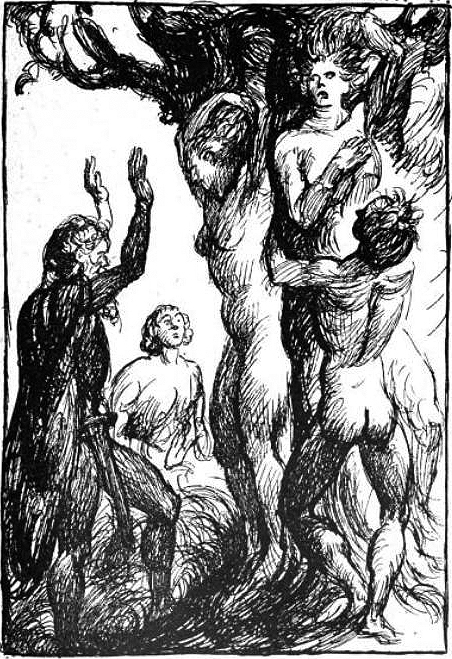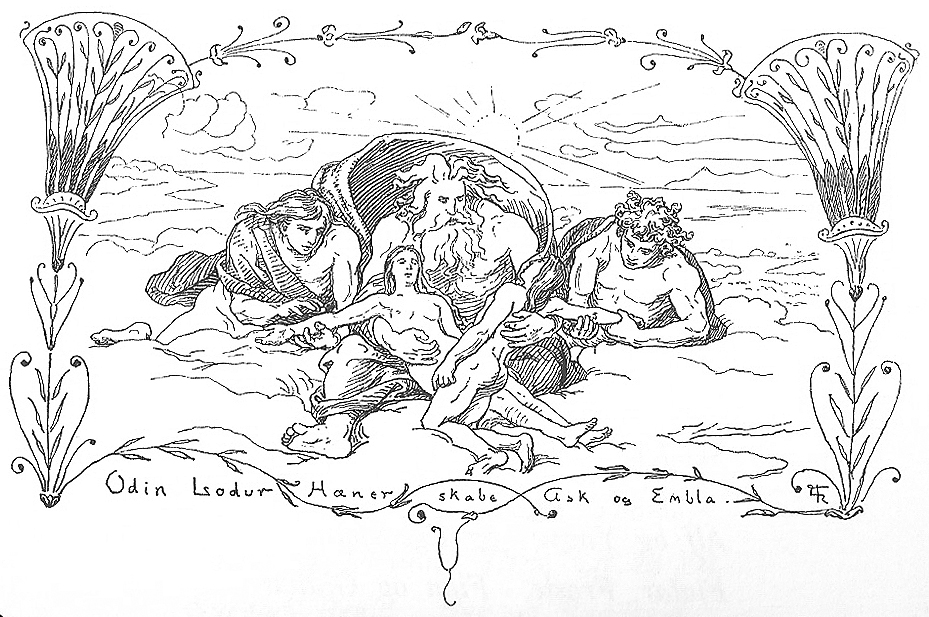Ask and Embla are the first humans in existence in Norse mythology. They were created by Norse God brothers Odin, Vili, and Vé. Their story shares parallels to the Christian Adam and Eve, as well as other faith traditions where two humans populated the entire Earth.
Ask and Embla were the original humans created by Norse Gods Odin, Vili, and Vé. They were perfect, living a life of simplicity and raising generations of perfect humans. But the idyllic life of humans in Midgard didn’t last forever due to the meddling of evil beings from the other realms who took on human form.
Ask and Embla shouldn’t be confused with Lif and Lifthrasir, the sole human survivors after Ragnarök.
Who are Ask and Embla in Norse mythology?
Ask and Embla are the first humans on Earth, called Midgard in Norse mythology. They are the parents of all humans that existed before Ragnarök.
While there are some parallels between Ask and Embla and Adam and Eve, their stories are vastly different. And unlike Eve, who was created from Adam’s rib, Ask and Embla were created at the same time from wood elements.
After the gods gave them life, Ask and Embla named all the animals they saw in Midgard. They tamed the animals that could be tamed. After much travel, they found a house already built for them and made it their home. They populated Midgard, raising several generations of perfect humans.
Odin gave the pair dominion over Midgard and entrusted them with ruling the Earthly realm. After many generations, giants and other beings came to Midgard disguised as humans. They interbred with the descendants of Ask and Embla. This created problems for their offspring, who inherited some of the evil of their non-human parents.

The meaning behind the names Ask and Embla
Ask (Askr) in Old Norse means ash tree. Embla is thought to come from the Old Norse word “Almr,” meaning elm.
There are theories that the name Embla might have come from the Proto-Indo-European word Embla meaning vine. Whether Embla means elm or vine, both these words come from woody plants, which is fitting since both Ask and Embla were created from wood.
Notably, the creation of the first human pair out of wood elements is unique to faith traditions from the ancient Europeans and Indo-Europeans of Asia minor and what is now Iran. First human couples made from clay, Earth, or even blood are more commonly found in the ancient cultures of the Near East.
Who created Ask and Embla?
The most commonly accepted theory is that Ask and Embla were created by brothers Odin, Vili and Vé.
They were whittled from wood in the image of a man and a woman. Each of the three brothers gave the wooden images of Ask and Embla gifts so that they came alive.
According to Norse mythology, Ask and Embla came from driftwood found on Midgard by Vé when Odin, Vili and Vé were surveying Midgard. Vé’s wood took the form of a woman as he whittled, who they named Embla. Vili’s wood became a male called Askr. Once the carvings were complete, Odin gave the pair a soul and the breath of life.
To Ask and Embla, Vili gave thought, understanding, and the ability to move. Vé gave Ask and Embla the ability to speak, see, and hear. Vé also gave the first human pair good nature, a fair complexion, blood to flow through their veins and a healthy hue. Finally, Vé gave the first humans clothing.

Ask and Embla Attestations in the Eddas
Ask and Embla appear in both the Prose Edda and the Poetic Edda. In the Poetic Edda poem Völuspá, Ask and Embla were found on land and were capable of very little until they were given their gifts by three gods. In the Prose Edda, Ask and Embla appear in Chapter 9 of Gylfaginning and were created from driftwood.
Like many stories in Norse mythology, there’s quite a bit of disagreement among scholars regarding Ask and Embla in the Eddas. Translations are disputed and varied, which change the meaning of stories passed down through oral tradition long before they were recorded in the Eddas. The Poetic Edda and the Prose Edda attestations of Ask and Embla’s origin don’t entirely agree.
In the Poetic Edda, Odin, Hoenir and Lódurr were credited with Ask ad Embla’s creation. In this version, the two humans were found already formed but completely useless. So Odin gave them sense, Hoenir gave them blood, and Lódurr gave them a goodly color. Outside of Völuspá, almost nothing is known about Hoenir and Lódurr, which is why many scholars believe the Prose Edda attestations to be more accurate.
The Prose Edda tells the story quite differently. In Glyfaginning, the three brothers Odin, Vili and Vé find driftwood in Midgard, creating Ask and Embla from the raw materials. Once the pair was formed, the three gods took turns giving them gifts that gave them life.

